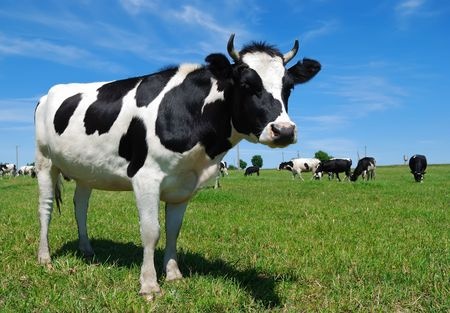A team of scientists led by CSIRO researcher Dr Mario Herrero, and including Professor Pete Smith from the University of Aberdeen, have found that the global livestock sector offers a significant opportunity to mitigate greenhouse gas emissions while maintaining the economic and social benefits of the sector.
The global livestock sector supports about 1.3 billion producers and retailers around the world, and is a significant global economic contributor. New analysis, published today in Nature Climate Change, estimates that livestock could account for up to half of the mitigation potential of the global agricultural, forestry and land-use sector, which is the second largest source of emissions globally, after the energy sector.
Dr Herrero said that this new account of the mitigation potential for the global livestock sector is the most comprehensive analysis to date as it considers both the supply and demand sides of the industry. A key finding is that it shows that for the livestock mitigation to be the most effective it needs to be part of a comprehensive effort across the agricultural, forestry and land use sectors. Additionally, finding the most sustainable and healthy levels of livestock product consumption in human diets is a crucial part of this mitigation potential.
Professor Smith said: “The projected levels of meat consumption cannot be sustained, so demand for meat and other livestock products will need to be managed. Nevertheless, livestock will retain a role in the healthy and sustainable diets of the future, and the sector has an important economic and social role, particularly in developing countries.”
Dr Herrero added: “We need to balance the optimal levels of consumption to achieve good health outcomes and maintain the economic and social benefits, while also capitalising on the mitigation potential the livestock sector offers.”
Dr Herrero said that sustainably intensifying livestock production is one way to maintain production levels while capitalising on the mitigation potential of the agricultural sector.
“We’ve found that there are a number of ways that the livestock sector could contribute to global greenhouse gas mitigation. Approaches like the adoption of new management strategies and production techniques could help to increase the productivity of the sector while reducing greenhouse gas emissions, and maintaining food security,” he said.
“We need to increase the adoption of these different strategies by making sure that we have the right incentives. Practices that increase livestock, crop and pasture productivity, if well managed and regulated, could not only reduce the greenhouse gas emissions from livestock, but also offer other related benefits like improved environmental health.
With the global drive for curbing global emissions rapidly after the Paris Conference of Parties, including livestock in the mitigation agenda should be high on the agenda.
The research was published today in Nature Climate Change and carried out in partnership between CSIRO, the International Institute for Applied Systems Analysis, CGIAR Climate Change Agriculture and Food Security Research Programme, Colorado State University, the University of Aberdeen, Chalmers University of Technology, Pennsylvania State University, FAO, Wageningen University, Karlsruhe Institute of Technology, the International Livestock Research Institute, University of Oxford, the PBL Netherlands Environmental Assessment Agency.


